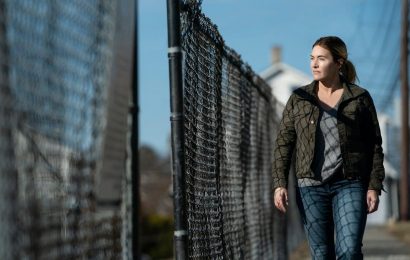[This post originally appeared as part of Recommendation Machine, IndieWire’s daily TV picks feature.]
Where to Watch ‘Love & Anarchy’: Netflix
If you took out all the flirting from “Love & Anarchy” (though why on earth would you ever do such a thing), what’s left is still a pretty solid workplace comedy. A Stockholm-area publishing house has its share of backward-facing execs, eminently more capable employees lower on the organizational chart, and one receptionist/secretary often baffled by what plays out in front of her desk.
But understandably, the hook of this series is the gradual escalation between Sofie (Ida Engvoll), the company’s new publishing consultant and Max (Björn Mosten), the temporary IT specialist who makes a noisy first impression. Much of the opening episodes is devoted to showing how one accidental after-hours interaction sets the template for a series of in-office dares between the two. What starts as a potential dark story of blackmail becomes a two-way street of risky codependence and testing limits.
Sofie is the main driving force for the series, and not just because she has the most to lose if this chaste (yet deepening)…thing goes further and further. She has a husband and two kids, and while they have their own family tension, it’s not the kind that leads her running into the arms of the first new man she meets. “Love & Anarchy” is built on a series of choices. Both Sofie and Max are driven by the prospect of having an excuse to talk to each other. It’s clandestine, it’s intimate, and it’s hypnotic.
Series writer/director/creator Lisa Langseth is always operating on a tonal razor’s edge, hovering near the center of the Venn diagram between “The Office” and “Toni Erdmann.” There are times when the show is so keyed into whether or not Sofie or Max can pull off their next task that it’s easy to get lulled into forgetting what else is at stake. Those moments when their flirty bubble gets punctured, you can feel the whole atmosphere of an episode shift in an instant.
So much of that groundwork is done on the faces of Engvoll and Mosten. The specific combination of thrilled and smitten and baffled and terrified that Engvoll in particular is able to put together (either in front of her work computer sneaking a peek at Max’s desk or lost in thought in the kitchen of her beautifully decorated townhouse) answers everything you need to know about why she keeps throwing caution to the wind.
It also makes sense just seeing the barely-contained smiles they trade after (or sometimes during) making good on each other’s instructions. Watching them formulate a plan in real time and wriggle out of any fallout adds some genuine uncertainty that goes beyond whether or not these two will end up acting on the feelings that are clearly brewing. It’s that success that indirectly gives the show something else to latch onto the further into the season that things go. Recklessness breeds recklessness, and it’s only a matter of time before either their luck or their boundaries will give way.
Even when the season gets tumultuous, Langseth keeps a steady hand in showing how the idea of control plays out for everyone caught up in this story. Some people need to relinquish their need for it, some are looking to reclaim it, and others are perfectly happy to lend it to someone else for a while, even if it means walking backwards through the office for an entire day.
And it’s not as if these two are being plopped into an office where they’re completely out of the ordinary. Having the two of them work at a publishing house puts them in a weird mix of financial and artistic interests that often leave its employees’ wires crossed. Amidst all the googly eyes (Sofie and Max aren’t the only people in the office with crushes of their own), the show is also wrestling with the idea of what it means to retain your creative spirit in the face of encroaching big business. (One prominent subplot involving a streaming service is made all the funnier considering this is a Netflix Original.)
Tricky romances usually go hand in hand with consequences. Sooner or later, there’s an ultimatum or a misunderstanding or a breaking point. Maybe the most exciting thing about “Love & Anarchy” is that Langseth fashions a set of circumstances where nothing is really inevitable for these two. There’s a “bodies in motion stay in motion” ideal that seems to power both Sofie and Max’s impulses and the show at large. As long as they keep moving and don’t stop too long think about the future, they’re protecting themselves. Maybe Season 2 (which Netflix says is on its way at some point) will deal with some of the collateral damage that tends to be littered around stories like this. But for now, “Love & Anarchy” is a show that delights in getting away with as much as it can.
Pair It With: It’s both on the nose and a tad misleading to match this series up with a song called “The End of the Affair.” But it’s a Laura Marling instant classic that’s not only gorgeous and gutting (and quite possibly the best song of this young decade), it also happens to feature a character named Max.
Missed any other outputs from Recommendation Machine? You can read every past version here.
Source: Read Full Article







